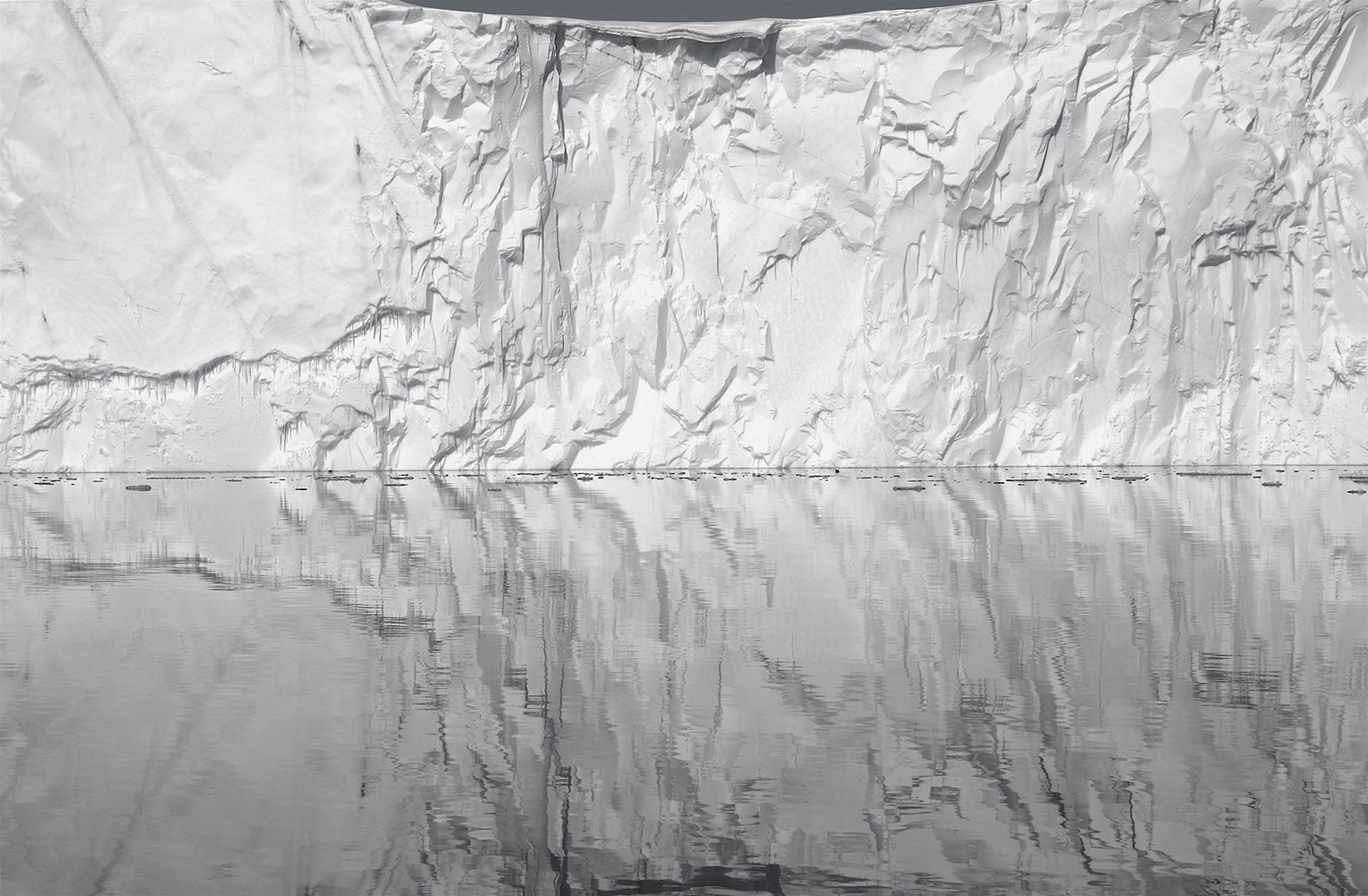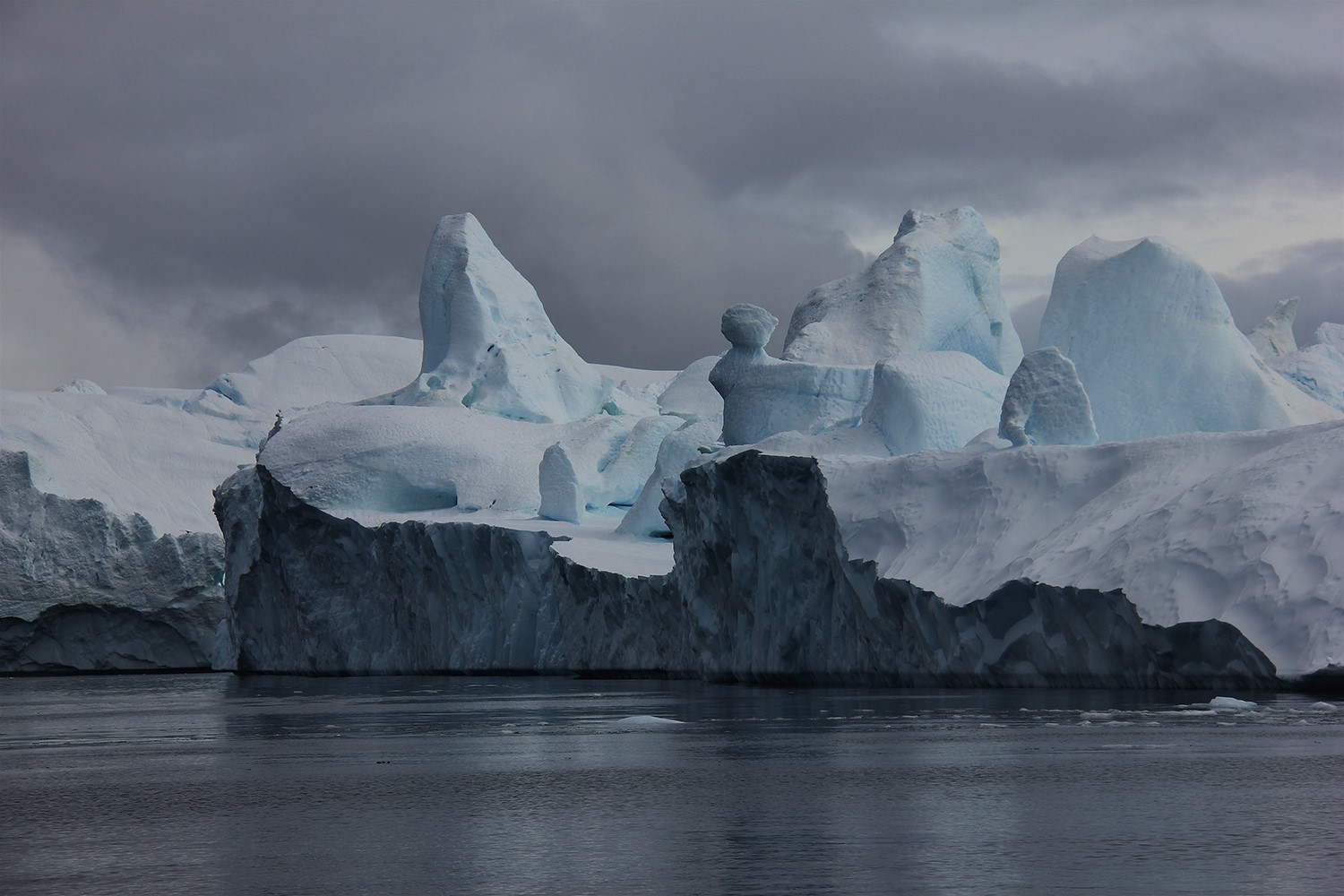Sustainable Culture issues a rallying cry from the melting and mutating icecaps of the Antarctic
As water freezes into its solid state it becomes a slippery mass, glistening in the sunlight, magically both translucent and opaque, white and blue – ice. Large masses of ice have a particularly foreboding presence; they peek above the sea's surface hiding their girth that often descends thousands of meters below. The latest exhibition Out Of Ice, at the Ambika P3 space in London is a tribute to the wonders of the frozen world, a variety of video and installation works by artist Elizabeth Ogilvie.
Ogilvie has made multiple trips to Greenland over the last five years and built up a view of the icy outerlands through the eyes of scientists, the local Inuit people and the raw poetics of its crystalline formation and crack-filled demise.
"Refracted through the eyes of scientists and the landscape's inhabitants, the ice situation is shocking and pertinent to us all"
Large pools of water bring the experience of nature into the gallery space as the ice melts, floes and forms on the screen behind, reflected off the surface of its liquid sister. A series of films of Inuit people show how the changing face of ice affects their lives. Intensely frank and fearful, they tell how the miles of ice were their natural infrastructure but now, as the ice has become too thin to get around, they are left marooned. Stories like this often seem isolated and far removed from our daily lives, but refracted through the eyes of scientists and the landscape's inhabitants, the situation is shocking and pertinent to us all.

Polar scientists have found that submerged below sea level – formed of many layers of ice from annual snowfalls – ice sheets hold the secrets of our climate's evolution. Research teams are stationed in both Greenland and the Antarctic, delicately drilling down many kilometres in order to extract long cylinders of ice, known as ice cores. The longest ice core to date stretched 3.2km long, extracted at Dome Concordia in Antarctica, with the ice at the bottom formed just under a million years ago. The tiny bubbles of air – trapped in the ice as the frozen mass forms – are the main interest for climate scientists. Each bubble is a tiny parcel of the earth's atmosphere frozen in time, which provides valuable data about carbon dioxide and methane levels over millennia. Peeling back the layers of ice shows that the most significant increase in carbon dioxide levels in the last 800,000 years occurred over a period of 1000 years. This significant increase has been equalled in just the last 11 years. The change in pace and intensity means ice core data can’t tell us much about the future because nothing like this has happened in over 800,000 years.
Suddenly, watching projections of towering majestic ice walls calmly creaking, their presence has new meaning – an imperative call to action. These are structures born long before our time, that we must ensure last long after we are gone.
Elizabeth Ogilvie: Out Of Ice is showing at Ambika P3 Gallery, University of Westminster until Feb 9th. Ice Season: Part II will explore glaciers through two international projects that capture their living presence as they continually advance and retreat, beautifully documenting the true effects of the changing climate.
Text by Abby Schlageter
